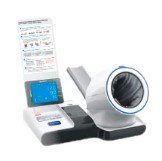Revolutionizing Medical Lab and Phlebotomy Practices: Impact of Point-of-Care Testing Technologies in the US
Summary
- Point-Of-Care Testing technologies are revolutionizing medical lab and phlebotomy practices in the United States.
- These new technologies improve efficiency by providing faster results, reducing turnaround times, and streamlining processes.
- The accuracy of testing is also enhanced, leading to better patient outcomes and overall quality of care.
Introduction
Point-Of-Care Testing technologies have been transforming the landscape of medical lab and phlebotomy practices in the United States. These advancements in technology have significantly improved the efficiency and accuracy of testing procedures, leading to better patient care and outcomes. In this article, we will explore the impact that new Point-Of-Care Testing technologies have had on medical labs and phlebotomy practices in the US.
Efficiency in Medical Lab and Phlebotomy Practices
One of the significant impacts of new Point-Of-Care Testing technologies is the improvement in efficiency in medical lab and phlebotomy practices. These technologies have streamlined processes and reduced turnaround times, allowing for faster results and quicker decision-making.
Benefits of Improved Efficiency
- Reduced wait times for patients.
- Increased throughput of testing procedures.
- Quicker diagnosis and treatment decisions.
Streamlining Processes
Point-Of-Care Testing technologies have automated many aspects of testing procedures, eliminating the need for manual handling of samples and reducing the risk of human error. This automation has led to more consistent and reliable results, improving the overall quality of care provided to patients.
Accuracy of Testing Procedures
Along with increased efficiency, new Point-Of-Care Testing technologies have also enhanced the accuracy of testing procedures in medical labs and phlebotomy practices. These technologies use advanced algorithms and Quality Control measures to ensure that results are precise and reliable.
Improved Quality Control
Point-Of-Care Testing technologies incorporate advanced Quality Control measures to detect and correct errors in real-time, ensuring that testing procedures meet the highest standards of accuracy and reliability. This leads to better patient outcomes and a higher level of trust in the testing results.
Enhanced Data Analysis
New technologies allow for more in-depth data analysis, allowing Healthcare Providers to identify trends and patterns in Test Results that may have gone unnoticed in the past. This can help in making more informed decisions regarding patient care and treatment options.
Conclusion
The impact of new Point-Of-Care Testing technologies on the efficiency and accuracy of medical lab and phlebotomy practices in the United States cannot be overstated. These advancements have revolutionized the way testing procedures are conducted, leading to faster results, improved accuracy, and better overall patient care. As technology continues to evolve, we can expect to see even more significant improvements in the efficiency and accuracy of medical lab and phlebotomy practices in the future.

Disclaimer: The content provided on this blog is for informational purposes only, reflecting the personal opinions and insights of the author(s) on the topics. The information provided should not be used for diagnosing or treating a health problem or disease, and those seeking personal medical advice should consult with a licensed physician. Always seek the advice of your doctor or other qualified health provider regarding a medical condition. Never disregard professional medical advice or delay in seeking it because of something you have read on this website. If you think you may have a medical emergency, call 911 or go to the nearest emergency room immediately. No physician-patient relationship is created by this web site or its use. No contributors to this web site make any representations, express or implied, with respect to the information provided herein or to its use. While we strive to share accurate and up-to-date information, we cannot guarantee the completeness, reliability, or accuracy of the content. The blog may also include links to external websites and resources for the convenience of our readers. Please note that linking to other sites does not imply endorsement of their content, practices, or services by us. Readers should use their discretion and judgment while exploring any external links and resources mentioned on this blog.
